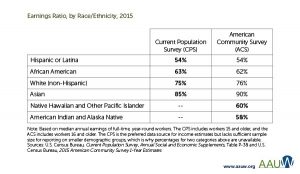On October 24th 1975 I was only a year old. My mother wasn’t thinking about what I would be when I grew up: she was just enjoying my being adorable. But when she did start to imagine my future she pictured me going off to college, which I did. She also pictured me getting a wonderful job that gave me a sense of purpose, which I have. However, she never imagined that as a Latina I would make 46% less than a white man, and 21% less than a white woman.
Sadly that is the case for many women, especially women of color. The women in Iceland decided to do something about this wage gap and on October 24th 1975, 90% of Icelandic women walked off their jobs in strike. This one action changed the course of their country.
A year after the walk out Iceland formed their Gender Equality Council. This group of individuals was able to pass the Gender Equality Act that made gender discrimination illegal. Five years later Iceland elected its first female president, Vigdis Finnbogadottir, who held office for four terms.
In America today women make up 47% of the labor force (according to a white house report) and if we went on strike it would bring our economy to a halt.
Wage Gap by Race
A Closer Look at the Numbers by Race
Using a single benchmark provides a more informative picture. Because non-Hispanic white men are the largest demographic group in the labor force, they are often used for that purpose. AAUW uses two different data sources for earnings ratios by race/ethnicity. For African American, Asian American, and Latina and Hispanic women, we follow the Current Population Survey (CPS). Because the CPS lacks sufficient sample size for smaller demographic groups, we follow the American Community Survey (ACS) for Native Hawaiian and other Pacific Islander, American Indian, and Alaska Native women.
Compared with salary information for white male workers, Asian American women’s salaries show the smallest gender pay gap, at 85 percent of white men’s earnings. The gap was largest for Hispanic and Latina women, who were paid only 54 percent of what white men were paid in 2015 (below).
Student Debt, Race, and the Pay Gap
The gender pay gap persists across educational levels and is worse for African American and Hispanic women, even among college graduates. As a result, women who complete college degree are less able to pay off their student loans promptly, leaving them paying more and for a longer time than men.
Despite the gains women have made in the workforce, the pay gap persists. Individuals in the workforce, community, and government have the ability to help chip away at the pay gap.
——————————————————————————————————————
Related Links:
ASU Women’s and gender studies facebook
ASU Women’s and gender studies degree
——————————————————————————————————————-



